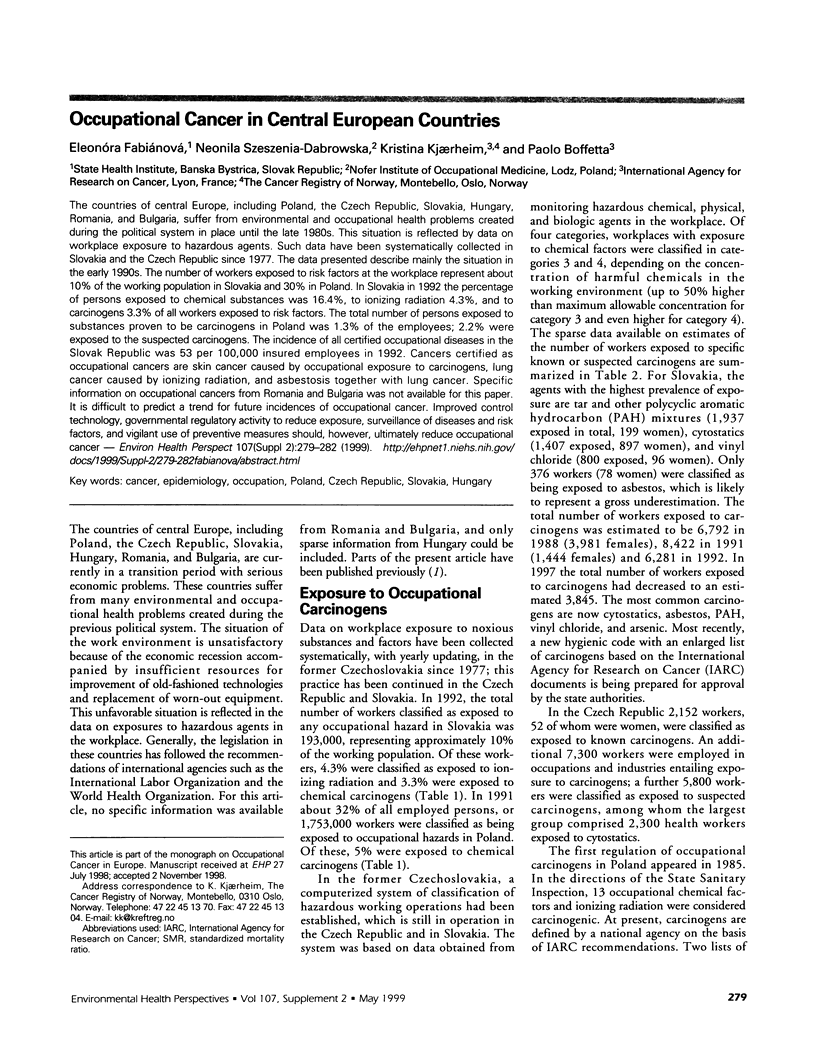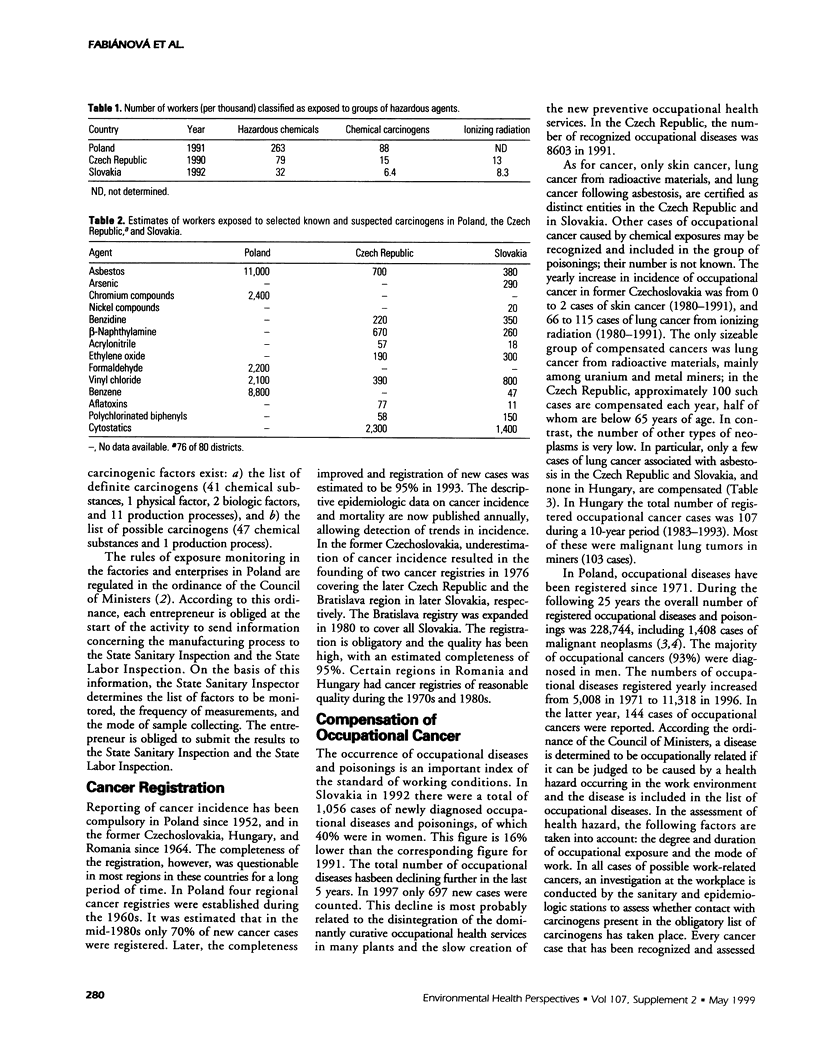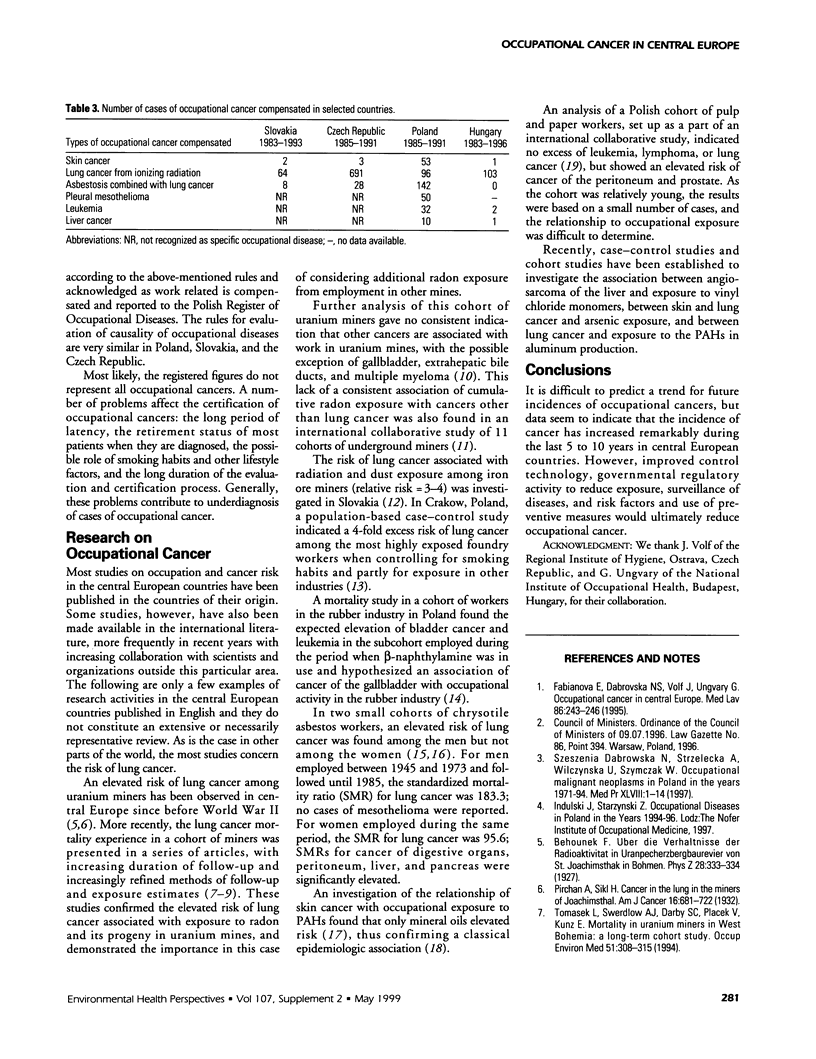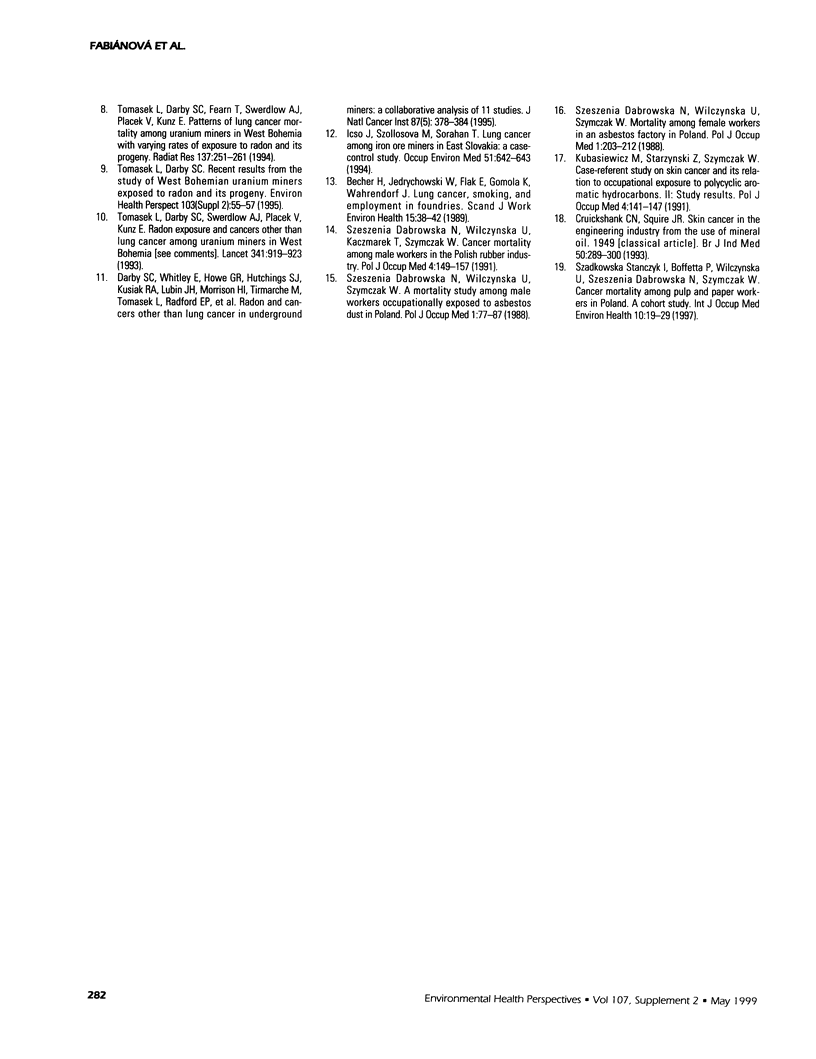Abstract
The countries of central Europe, including Poland, the Czech Republic, Slovakia, Hungary, Romania, and Bulgaria, suffer from environmental and occupational health problems created during the political system in place until the late 1980s. This situation is reflected by data on workplace exposure to hazardous agents. Such data have been systematically collected in Skovakia and the Czech Republic since 1977. The data presented describe mainly the situation in the early 1990s. The number of workers exposed to risk factors at the workplace represent about 10% of the working population in Slovakia and 30% in Poland. In Slovakia in 1992 the percentage of persons exposed to chemical substances was 16.4%, to ionizing radiation 4.3%, and to carcinogens 3.3% of all workers exposed to risk factors. The total number of persons exposed to substances proven to be carcinogens in Poland was 1.3% of the employees; 2.2% were exposed to the suspected carcinogens. The incidence of all certified occupational diseases in the Slovak Republic was 53 per 100,000 insured employees in 1992. Cancers certified as occupational cancers are skin cancer caused by occupational exposure to carcinogens, lung cancer caused by ionizing radiation, and asbestosis together with lung cancer. Specific information on occupational cancers from Romania and Bulgaria was not available for this paper. It is difficult to predict a trend for future incidences of occupational cancer. Improved control technology, governmental regulatory activity to reduce exposure, surveillance of diseases and risk factors, and vigilant use of preventive measures should, however, ultimately reduce occupational cancer.
Full text
PDF



Selected References
These references are in PubMed. This may not be the complete list of references from this article.
- Becher H., Jedrychowski W., Flak E., Gomola K., Wahrendorf J. Lung cancer, smoking, and employment in foundries. Scand J Work Environ Health. 1989 Feb;15(1):38–42. doi: 10.5271/sjweh.1884. [DOI] [PubMed] [Google Scholar]
- Cruickshank C. N., Squire J. R. Skin cancer in the engineering industry from the use of mineral oil. 1949. Br J Ind Med. 1993 Apr;50(4):289–300. [PMC free article] [PubMed] [Google Scholar]
- Darby S. C., Whitley E., Howe G. R., Hutchings S. J., Kusiak R. A., Lubin J. H., Morrison H. I., Tirmarche M., Tomásek L., Radford E. P. Radon and cancers other than lung cancer in underground miners: a collaborative analysis of 11 studies. J Natl Cancer Inst. 1995 Mar 1;87(5):378–384. doi: 10.1093/jnci/87.5.378. [DOI] [PubMed] [Google Scholar]
- Fabiánova E., Dabrovska N. S., Volf J., Ungvary G. Occupational cancer in central Europe. Med Lav. 1995 May-Jun;86(3):243–246. [PubMed] [Google Scholar]
- Icsó J., Szöllösová M., Sorahan T. Lung cancer among iron ore miners in east Slovakia: a case-control study. Occup Environ Med. 1994 Sep;51(9):642–643. doi: 10.1136/oem.51.9.642. [DOI] [PMC free article] [PubMed] [Google Scholar]
- Kubasiewicz M., Starzyński Z., Szymczak W. Case-referent study on skin cancer and its relation to occupational exposure to polycyclic aromatic hydrocarbons. II. Study results. Pol J Occup Med Environ Health. 1991;4(2):141–147. [PubMed] [Google Scholar]
- Szadkowska-Stańczyk I., Boffetta P., Wilczyńska U., Szeszenia-Dabrowska N., Szymczak W. Cancer mortality among pulp and paper workers in Poland. A cohort study. Int J Occup Med Environ Health. 1997;10(1):19–29. [PubMed] [Google Scholar]
- Szeszenia-Dabrowska N., Wilczyńska U., Kaczmarek T., Szymczak W. Cancer mortality among male workers in the Polish rubber industry. Pol J Occup Med Environ Health. 1991;4(2):149–157. [PubMed] [Google Scholar]
- Szeszenia-Dabrowska N., Wilczyńska U., Szymczak W. A mortality study among male workers occupationally exposed to asbestos dust in Poland. Pol J Occup Med. 1988;1(1):77–87. [PubMed] [Google Scholar]
- Szeszenia-Dabrowska N., Wilczyńska U., Szymczak W. Mortality among female workers in an asbestos factory in Poland. Pol J Occup Med. 1988;1(3):203–212. [PubMed] [Google Scholar]
- Tomásek L., Darby S. C., Fearn T., Swerdlow A. J., Placek V., Kunz E. Patterns of lung cancer mortality among uranium miners in West Bohemia with varying rates of exposure to radon and its progeny. Radiat Res. 1994 Feb;137(2):251–261. [PubMed] [Google Scholar]
- Tomásek L., Darby S. C. Recent results from the study of West Bohemian uranium miners exposed to radon and its progeny. Environ Health Perspect. 1995 Mar;103 (Suppl 2):55–57. doi: 10.1289/ehp.103-1518834. [DOI] [PMC free article] [PubMed] [Google Scholar]
- Tomásek L., Darby S. C., Swerdlow A. J., Placek V., Kunz E. Radon exposure and cancers other than lung cancer among uranium miners in West Bohemia. Lancet. 1993 Apr 10;341(8850):919–923. doi: 10.1016/0140-6736(93)91212-5. [DOI] [PubMed] [Google Scholar]
- Tomásek L., Swerdlow A. J., Darby S. C., Placek V., Kunz E. Mortality in uranium miners in west Bohemia: a long-term cohort study. Occup Environ Med. 1994 May;51(5):308–315. doi: 10.1136/oem.51.5.308. [DOI] [PMC free article] [PubMed] [Google Scholar]


